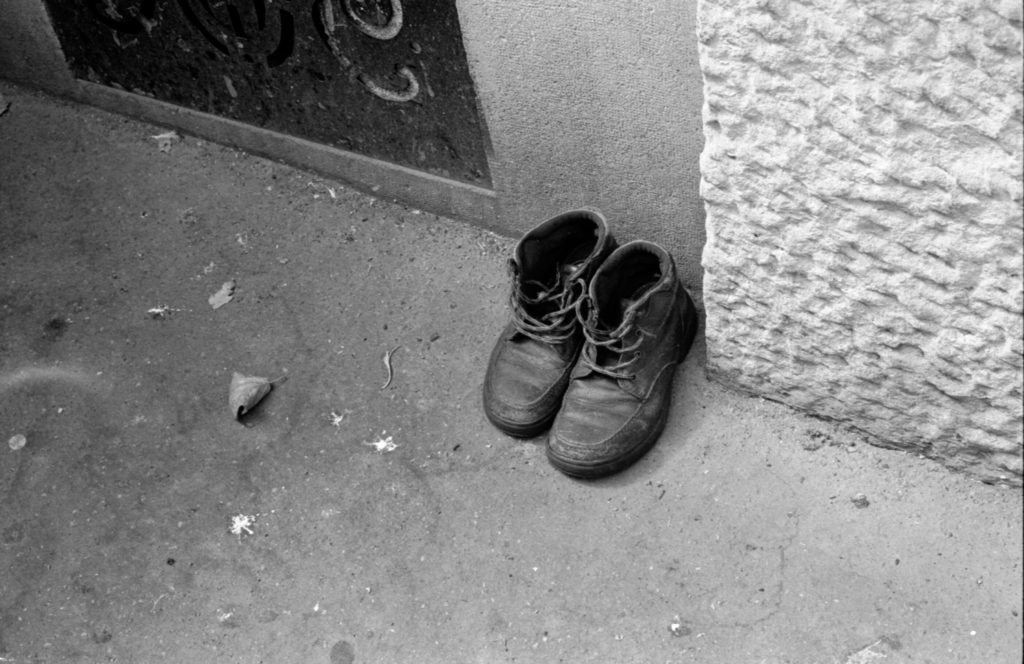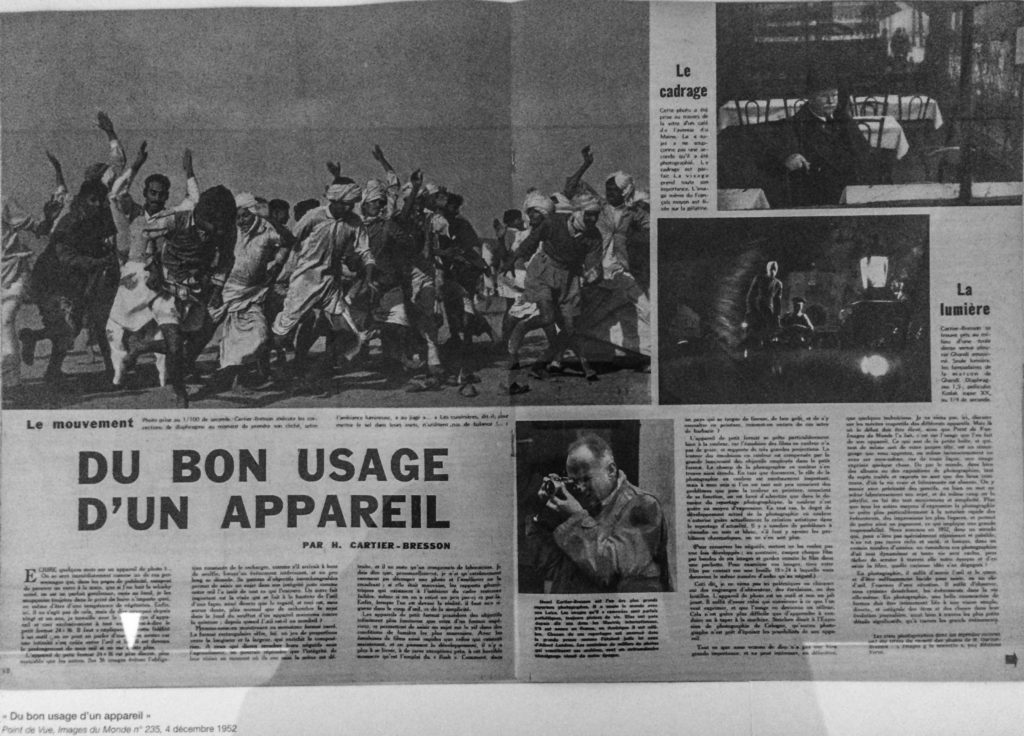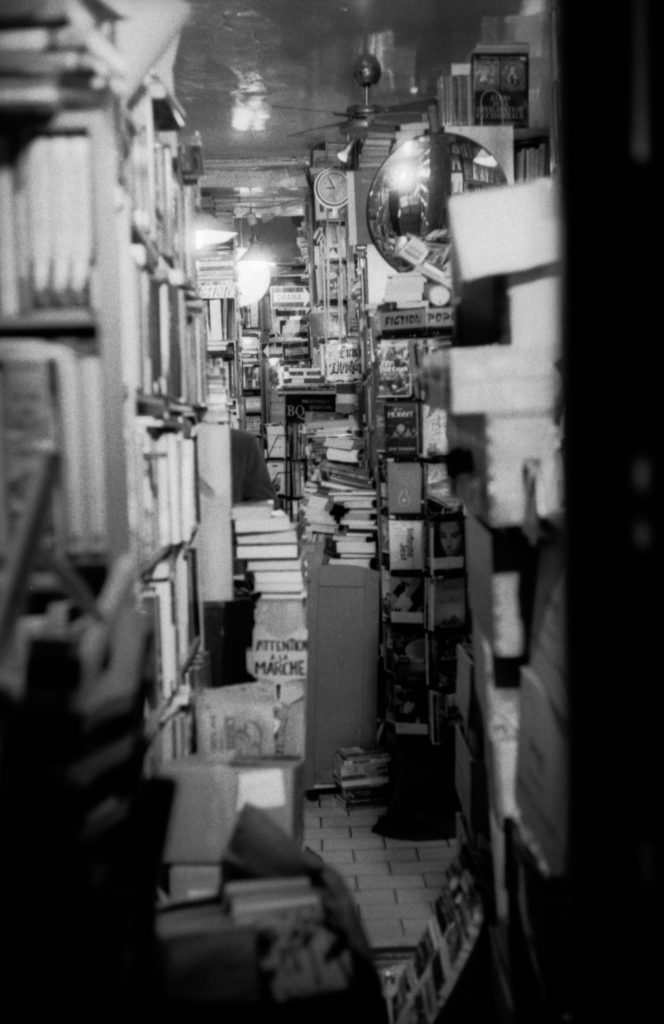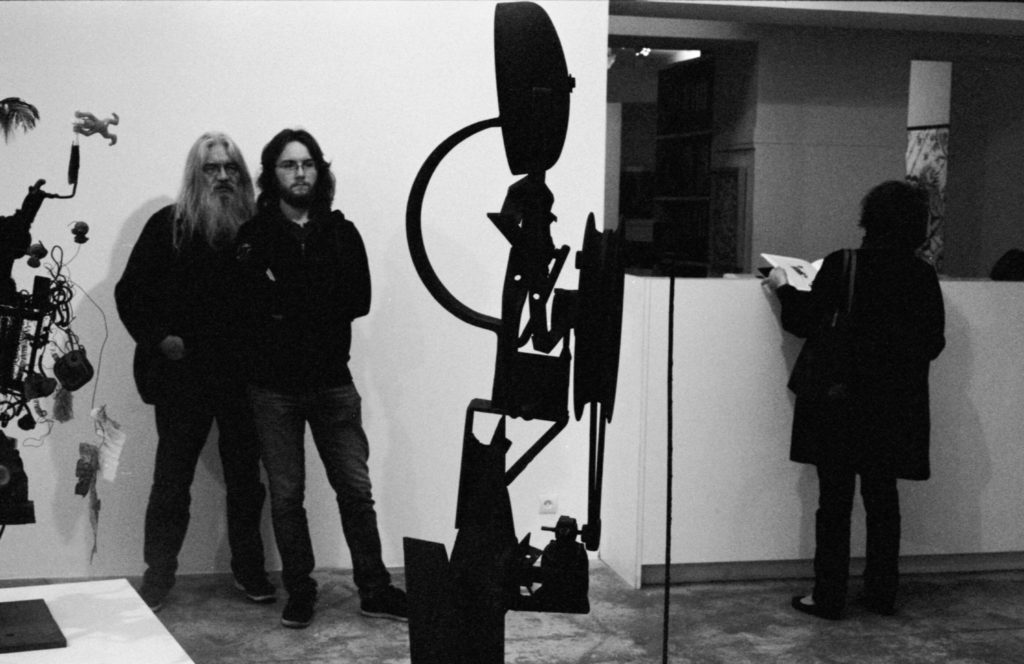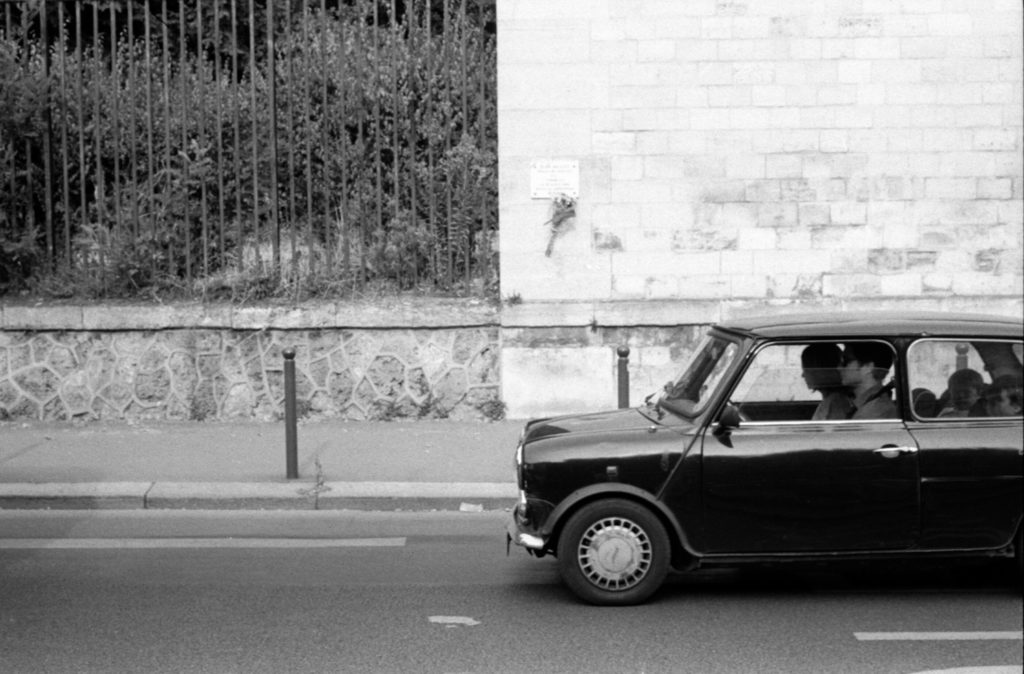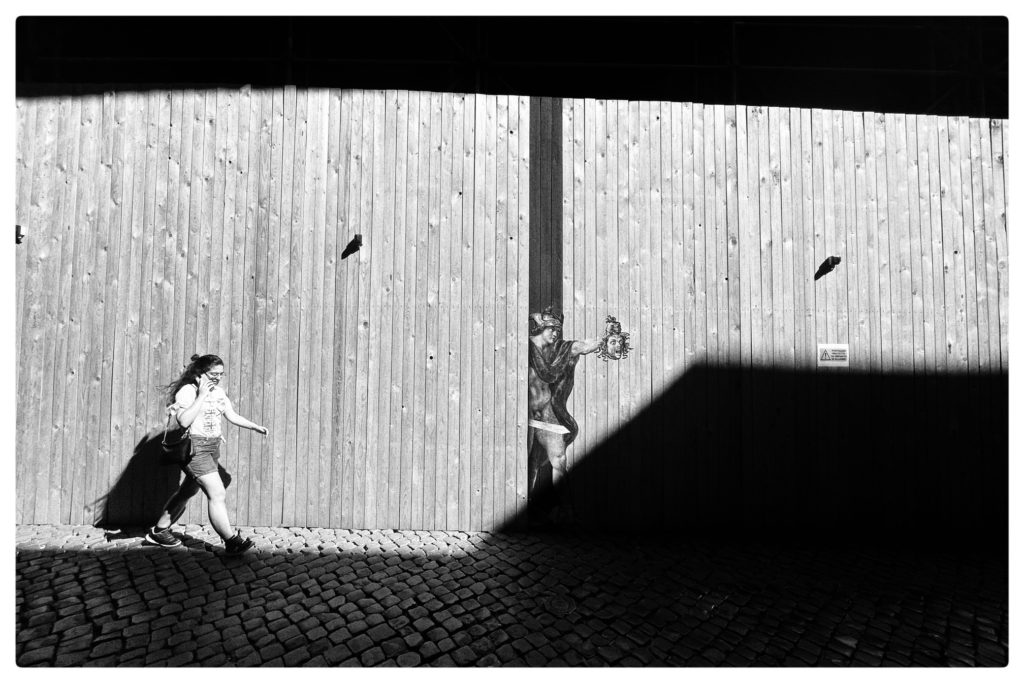
Rome. I don’t care what my Instagram followers think: This is a great photo.
I’m back from a few weeks abroad…barely. The wife’s positive COVID test less than a day before we were set to return home gave an interesting twist to the trip; luckily she re-tested negative the next morning and boarded her flight home. She’s since tested negative again once home. Major clusterf**k narrowly averted, as the States are requiring a negative COVID test for re-entry from abroad. Luckily, we were staying with friends who offered to allow us to stay at their beautiful Paris flat while they went to their country home. It’s nice to have friends like that. Fortunately, we were both able to get home without further complications.
Speaking of friends, we received the news of my wife’s positive test the evening before departure while dining with Leicaphilia reader and contributor Dr. Henry Joy McCracken and his wife at their Paris flat. (Henry, as some of you may know, is an astrophysicist currently working on a project to send the world’s most powerful [digital] camera into space. He’s also a dedicated film shooter in his private life, the irony, of course, being obvious. I love that about Henry.) We were just opening a bottle of Basil Hayden bourbon I’d brought along as a gift when my wife checked her email and saw her positive test result… which unfortunately put a crimp in the remainder of an otherwise wonderful evening. Henry and his wife were gracious enough not to call the health authorities and have us removed immediately, but the night, which to that point had been really nice – dinner, wine, great conversation – lost its mojo.
In addition to being a brilliant astrophysicist, Dr. McCracken is a great guy. We met through this website. Henry, knowing I was often in Paris, invited me to the Paris Observatory where he works the next time I was in town. I took him up on it, at which time Henry gave me a tour of the old Observatory (second oldest in the world) and brought me up onto the roof and into the original observation area. Pretty amazing. We’ve since become friends. Let this be a lesson to all you readers who live in exotic places or do exotic things: Invite me and I will happily come and eat your food and drink your whiskey. If things go well, I’ll invite myself back.
*************

Dubrovnik, Croatia
Our trip consisted of a week in Dubrovnik with a bunch of European friends, followed by 4 days in Rome and then 4 days in Paris with Parisian friends. Dubrovnik, where I’d not been before, was marvelous. Known to be usually crawling with tourists in the manner of Venice, it was remarkably free of crowds, due, I suppose, to COVID and the travel problems associated with it. We rented a large flat overlooking the Old City and spent the week drinking Croatian wine (not bad) and beer (not bad either). I’d brought a few cameras – the M240, the MM and the Ricoh GXR – but didn’t use them much given I didn’t see much to photograph other than the usual tourist sights that’ve been photographed a million times. It certainly wasn’t a place that lent itself to any street photography, why, I can’t articulate; it just wasn’t. Frankly, the entire town was so clean and orderly it felt like a movie set. Beautiful place, nice people, but give me the grittiness of Naples any day.

The Best I Could Do in Dubrovnik. I like it (the square motif and all); Nobody else does, if my Instagram Feed is any Indication. I despise Instagram.
While in Dubrovnik I dropped my MM from a side table – the height being no more than 18 inches – immediately checked to see if it turned on (yup) and the rangefinder was still accurate (yup) and thought no more of it…until I tried to take a photo and the shutter wouldn’t work. Had it been a Nikon….or even my old ratty Ricoh GXR, it would have cranked right up and fired, no problem. But its a Leica, and now I’ve got to send it someplace far away and wait 6 months while the gnomes who work in Leica’s repair department open it up, reconnect some wire that’s loose and charge me $1000 for the privilege. To Leica’s credit, the M240 worked great throughout. Bravo Leica, a $5000 camera that actually works.
*************

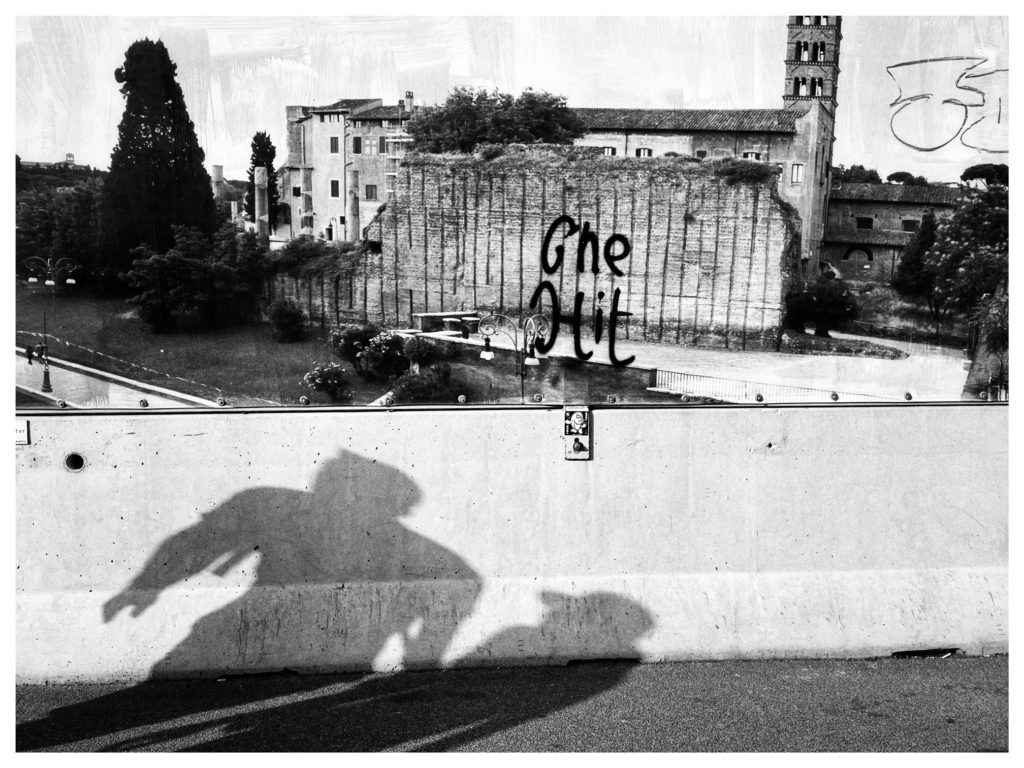

Rome
From Dubrovnik it was off to Rome. I’ve been to Rome a few times, but never enjoyed it as much as I did this time around. The weather was perfect – sunny, warm, but not hot – and there were few tourists around, which made it perfect for seeing the touristy sites without battling a million other people. We stayed in a beautiful flat in the Monti district close to the Trevi Fountain – apparently its the flat Diane Keaton stays at while in Rome (take that, Thorsten Overgaard) – and spent the days walking and eating and drinking.
I’m a pizza fanatic. My favorite pizzerias are John’s on Bleecker Street in New York City and L’Antica Pizzeria da Michele in Naples, and I was looking forward to some authentic ‘Roman Pizza’, which a pizzeria here in Chapel Hill claims is a thing (what they claim to be ‘Roman Style’ is excellent – wood-fired crispy thin crust light on the tomato and cheese). Unfortunately, the Roman version of “Roman Style’ pizza seems to be, well, pizza. Nothing special, which didn’t, however, keep me from eating pizza each night for dinner. There are worse things in life than sitting at a streetside table in Rome eating good, not great, pizza.
Rome was a great place for the iPhone. The days of people getting pissed off at you for taking their photo in public are long gone, thanks to the iPhone. Everyone, and I mean everyone, is snapping pictures of everything with their phones. I rarely saw anyone with a dedicated camera – when I did, it was usually some old guy with a consumer grade Nikon with zoom looking all serious. As for me, I never bothered to use the Leicas out of doors, first because the damn MM wouldn’t work and second, because I didn’t feel like lugging them around, and third, because I had my iPhone, which works great on the street. Above, and below, are a few examples of photos taken in Rome with the iPhone. Super simple – aim, shoot as many times as you like, run what you like thru Snapseed and then post on Instagram.
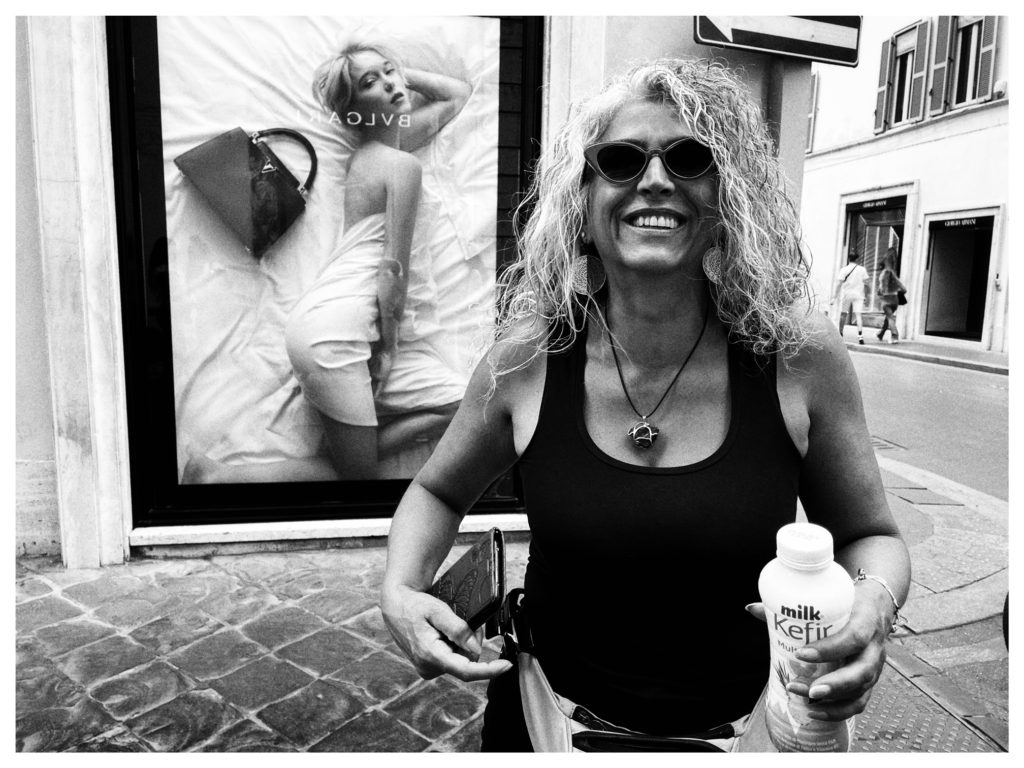

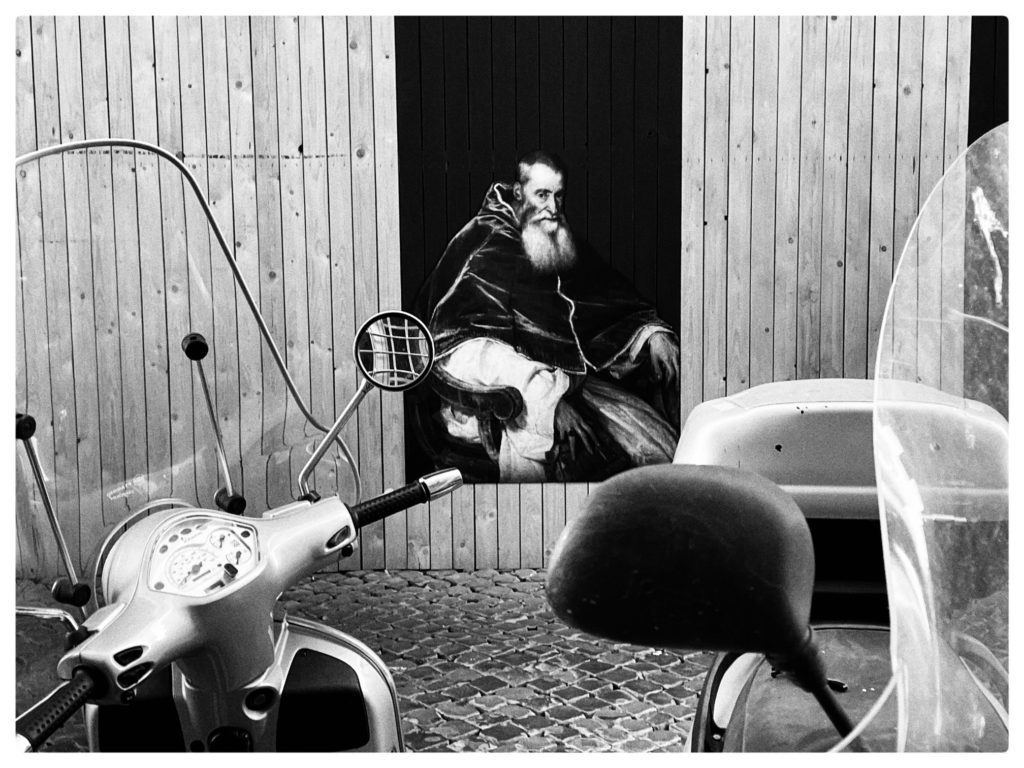
*************

Marie Antionette’s Bedroom, Versailles
Ah yes, Instagram. For some reason I can’t now recalI I thought it would be fun to post a few pics from the trip to my Instagram account as the trip was happening. Unfortunately, posting on Instagram is an exercise in abject futility and personal humiliation, embodying everything wrong with photography or what’s left of it. Post something that works – the photo that opens this article being a perfect example – crickets. (The one photo I liked best from the entire trip got zero likes.) Post photos of your lunch, or pretty girls making stupid faces, and the ‘likes’ pour in. I need that like I need a hole in my head. Lesson learned: Instagram is worthless – social media monkeys chasing their tails in order to have something they post get ‘liked.’ Why anyone voluntarily submits to such indignity is beyond me.
Coming soon Part 2: Paris, Why Instagram Sucks, and Why I’m Now an ‘iPhone Photographer’


